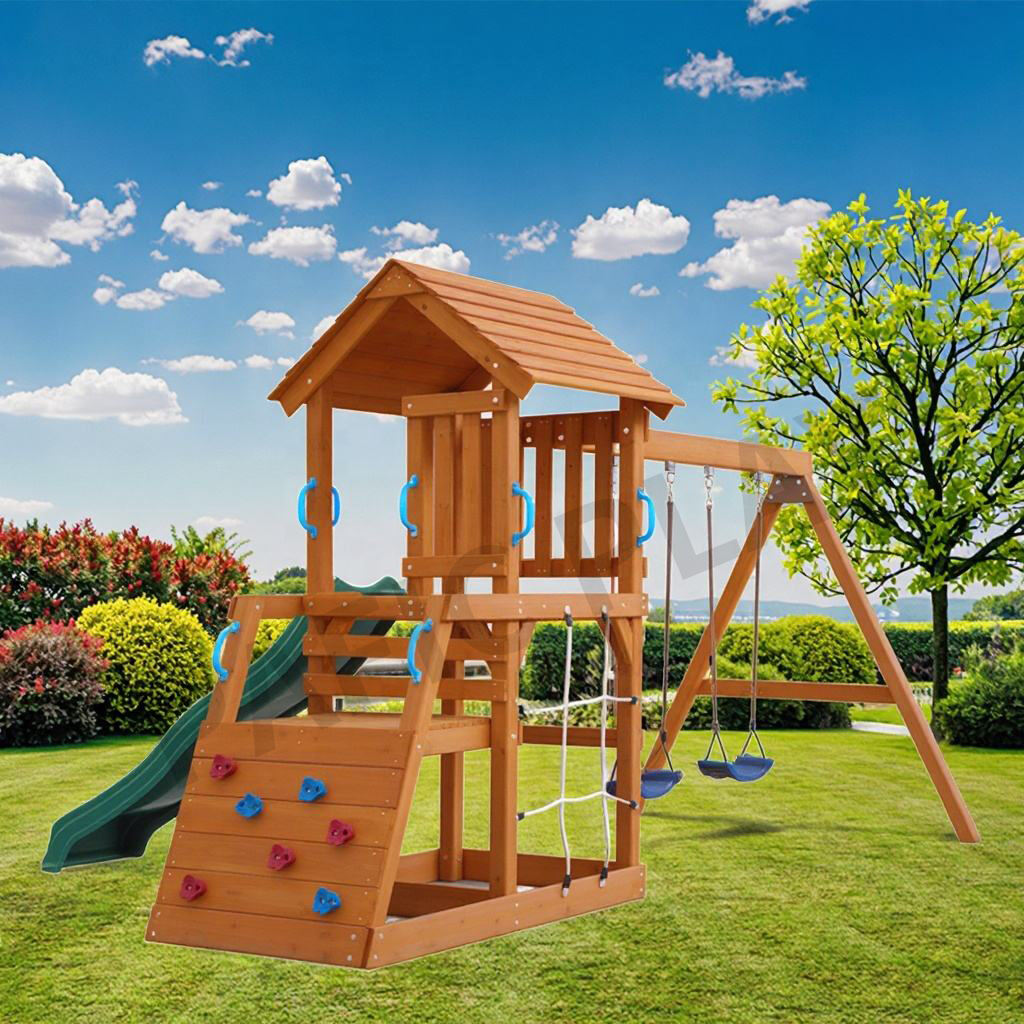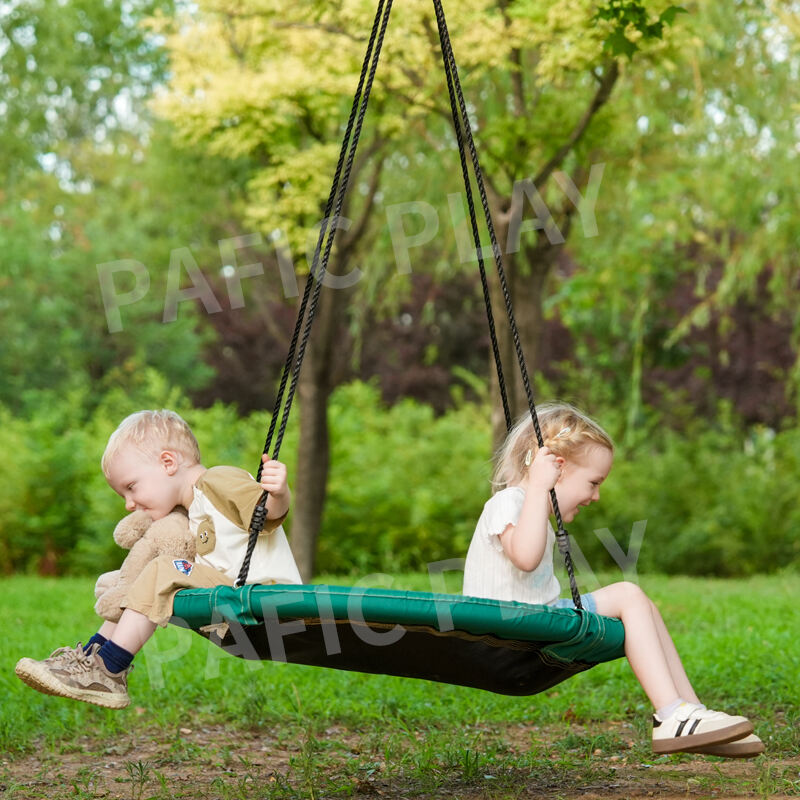Creating lasting memories in your backyard starts with selecting the right swing set for your family. The decision between wooden and metal swing sets goes beyond simple aesthetics – it involves careful consideration of durability, maintenance, safety, and long-term value. Each material offers distinct advantages that cater to different family needs and environmental conditions.
Parents across the country face this common dilemma when investing in outdoor play equipment. The choice of material significantly impacts not only the initial purchase but also the years of enjoyment your family will experience. Let's explore the comprehensive comparison between wooden and metal swing sets to help you make an informed decision for your backyard paradise.
Wooden swing sets bring a timeless, natural charm to any backyard setting. Their rustic appearance blends seamlessly with landscape design, creating an inviting atmosphere that complements both traditional and modern homes. Cedar, redwood, and pressure-treated pine are popular choices, each offering unique aesthetic qualities that age beautifully over time.
The visual warmth of wooden swing sets makes them particularly appealing for homeowners who prioritize outdoor aesthetics. Unlike their metal counterparts, wooden sets can be easily customized with different stains and colors to match your home's exterior or personal preferences.
Quality wooden swing sets, when properly maintained, can last 15-20 years or more. Premium woods like cedar naturally resist decay, insects, and weather damage. Pressure-treated lumber offers additional protection against environmental factors, making it particularly suitable for regions with varying weather conditions.
However, wood requires regular maintenance to maintain its structural integrity. Annual inspection, sealing, and staining help prevent warping, splitting, and decay. While this maintenance demands time and effort, it ensures the swing set remains safe and attractive throughout its lifespan.
Metal swing sets shine in their low-maintenance requirements. Galvanized steel frames resist rust and corrosion, often requiring minimal upkeep beyond occasional cleaning. This convenience appeals to busy families who prefer spending time playing rather than maintaining equipment.
The durability of metal sets typically extends 10-15 years, with proper powder coating providing additional protection against weather elements. While they may not last quite as long as well-maintained wooden sets, their consistency in performance and minimal care requirements make them an attractive option.
Modern metal swing sets incorporate advanced safety features and engineering. The sturdy steel construction provides excellent stability, particularly important for active children. Many metal sets feature rounded edges and protective coating to prevent injuries and enhance safety during play.
Weight capacity is another advantage of metal swing sets. The inherent strength of steel allows for higher weight limits, making these sets suitable for growing families with children of various ages.

The upfront cost of swing sets varies significantly based on material choice. Wooden sets typically command higher initial prices, particularly those made from premium materials like cedar or redwood. Metal sets often present a more budget-friendly entry point, though high-end models can rival wooden set prices.
When evaluating cost, consider the complete package including installation fees, additional features, and warranty coverage. While metal sets might seem more economical initially, the long-term value proposition requires deeper analysis.
Maintenance costs play a crucial role in the total ownership experience. Wooden sets require regular investment in sealants, stains, and occasional replacement parts. Metal sets generally incur lower maintenance costs but may require rust treatment or repainting over time.
Property value impact also merits consideration. Well-maintained wooden swing sets often contribute positively to home resale value, while metal sets typically have neutral impact. This factor could influence the overall return on investment for homeowners planning long-term residence.
Geographic location significantly influences swing set material selection. Wooden sets excel in moderate climates but may require extra protection in areas with extreme weather variations. Coastal regions present unique challenges due to salt air exposure and humidity.
Metal sets perform consistently across various climates but may become hot in direct sunlight. Consider your local weather patterns, seasonal changes, and specific environmental factors when choosing between materials.
Environmental consciousness increasingly influences purchasing decisions. Wooden swing sets, particularly those made from sustainably harvested timber, appeal to eco-conscious consumers. The biodegradable nature of wood provides an environmental advantage at the end of the product lifecycle.
Metal swing sets offer their own environmental benefits through recyclability and longevity. The minimal maintenance requirements also mean fewer chemical treatments and reduced resource consumption over time.

A well-maintained wooden swing set typically lasts 15-20 years or more, while quality metal sets generally provide 10-15 years of service. Regular maintenance and proper installation significantly impact longevity for both materials.
Metal swing sets generally require less maintenance than wooden ones. While wooden sets need annual sealing and staining, metal sets typically only need occasional cleaning and possible rust treatment every few years.
Wooden swing sets offer greater customization potential through painting, staining, and adding accessories. Metal sets have more limited customization options but often come with modular designs allowing for some configuration changes.
Look for rounded edges, sturdy construction, weather-resistant materials, and appropriate weight ratings. Wooden sets should have smooth, splinter-free surfaces, while metal sets should feature powder coating and rust protection. Both should meet current safety standards and include proper anchoring systems.
 Hot News
Hot News2025-12-11
2025-12-03
2025-11-03
2025-11-11
2025-11-19
2025-11-24